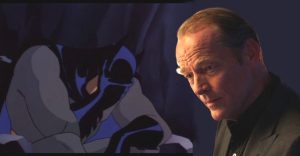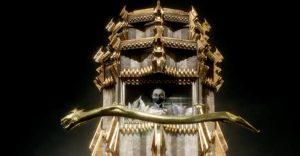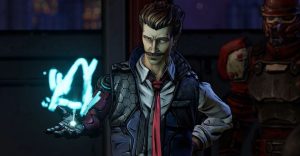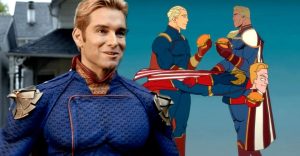Ed Skrein Interview – Maleficent: Mistress of Evil
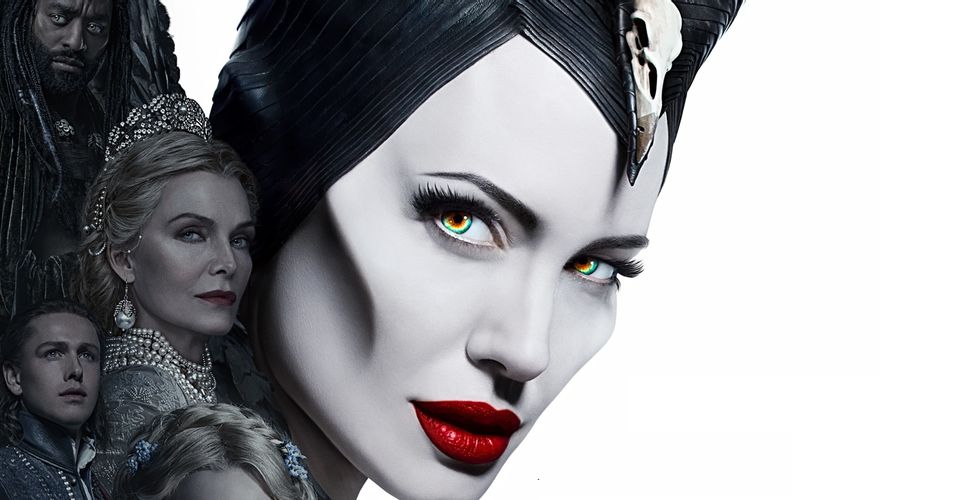
Maleficent: Mistress of Evil is much more than a sequel to a retelling of Sleeping Beauty. It’s, perhaps more importantly, an allegory for the divided times in which we live. As the world of the fae becomes more visible to the world of humans, fear and hatred seem to stand in the way of unity. One of the new characters who most exemplifies that divide is Borra, played by Ed Skrein. The actor cited those very themes as one of the reasons he chose the role, and further detailed his preparations for taking on the modern Disney classic.
Congratulations on the film. I really enjoyed it. What motivated you to join this version of Maleficent? Was it Sleeping Beauty, being a part of a Disney movie, working with Angelina Jolie, or something else?
Ed Skrein: There’s a lot of initial motivations to join this movie. First of all, I’ve done a lot of adult themed-movies. For me to do something that my kids and my nephews and nieces, and all the young people in my life, could enjoy is obviously a wonderful proposition. For me to be able to jump on board the Disney train and feel the identity and the energy of a Disney production as well, having grown up with Disney movies my whole life and it being such a cultural influence on me and all of us. So, that’s one level.
And then, aside from that, you’re talking about Angelina Jolie, Michelle Pfeiffer, Elle Fanning and Chiwetel Ejiofor. Lesley Manville is one of my favorite actresses, or actors full stop. What she did in The Phantom Thread is still one of my favorite performances of the last five years.
So, at this stage I am in my career where I just really want to learn and progress and grow, this is the most incredible opportunity for that.
These are the kind of basic reasons why I wanted to join it. Then I read the script, and I saw a different proposition from what people and myself may have expected. It’s a film with important themes that resonate close to my heart, touching on multicultural inclusion and lack thereof; on themes of otherness and fear of otherness; the contrasting reactions that people can have when they feel victimized; even environmental issues.
I saw this beautiful script with so much texture and depth and sort of emotional nuance to, and so much consciousness to it, that it was just an absolute no brainer. And then on top of that, I like subversive arts. As much as I wanted to join the Disney train, I still am most interested by Joe Pesci in Casino in the bar and the more conflicted characters. Maleficent is that personified.
Yes, this is a movie for young people as much as adults. But this is an antihero, complex character, struggling with herself on a journey to find herself – which is what all of us doing out here in this big bad world. You know, we’re just trying to find our place in this world.
So, there were so many reasons I wanted to join. And then once I joined, I I came on board this incredibly well-oiled machine. I’ve never known a production to run as smoothly; the technicians, the heads of department, are the best in the game. Chiwetel and Angelina, who I was predominantly opposite, were so generous with their energy. And I just had the best time. I genuinely think is the most fun I’ve ever had on a film set.
Something I find fascinating that you said in the press conference was that when you created the character, you did it kind of in isolation. You and Chiwetel have such great chemistry, but are also on opposing sides. Did you both come up with any backstory for your characters and their conflict? How do you think Borra has been championing the war?
Ed Skrein: Chiwetel and I both kind of approached our characters more in isolation. So, the great thing was a lot of it was on the page already. You could see that we had different attitudes towards the same goal, which was to to let our culture and our history survive; to let our people live and just be. Which obviously resonates very strongly with the rise of nationalism and such all around the world.
We had these two different opposing views. And what was interesting with the characters is, you could tell how close they were. You could see their love and the bond that they have. But they categorically disagree. It’s just like brothers in real life, and this is the kind of functional dysfunctional family dynamic that most of us actually grew up and existed in; one that is not accurately represented in most movies.
So, there was already something interesting there to then go in, to develop and look at. Borra’s approach is kind of a militaristic approach to retaliation. He’s got a petulant, younger, perhaps a more naive approach towards war as opposed to Conall’s aged and wise approach. It’s very interesting.
They say the most interesting thing when you’re acting is opposition in a conflict. It’s the love and trust that we have for each other, but the complete disagreement that we’re in – and that’s when something interesting happens on camera. That’s where you can feel how interesting it is. And every day I was on set, I was trying to convince him, “Let’s go to war, man. Let’s do this.”
And it was so frustrating for me, existing in it, even knowing that we had to play it that way. But it was an incredible dynamic between me and Chiwetel.

Something that I hope doesn’t go overlooked is how graceful you guys are with the flying. You can almost compare it to ballet. Can you talk to me about some of the training that went into that? Because it does look almost seamless, like that was something that you were born with.
Ed Skrein: I’ve done a lot of physical stunt work in movies, but I’ve never done anything with wires. I’ve done a couple of rigs where they just pull you back when you’ve had impact or whatever, but I’ve never done anything like this. And I’ve certainly never had to look graceful. Of all my physical traits, which may be positive, I’ve never been called graceful.
That’s part of the reason I love this job: learning new skills. And to go and practice with Joe [Kennard] and the stunt team, it was a joy to learn a new skill. I was doing a lot of martial arts and pilates to prepare for the role physically, just in terms of the shape and you being the right body composition for strong characters such as this. Martial arts and pilates are a lot about balance and core strength. This helps incredibly when you’re on the wires. In fact, the best tip I can give to anyone doing wire work is make your booty strong. It’s all glutes; if you squeeze your glutes, then you can relax the rest of your body. If your glutes are relaxed, then you’re just flopping around.
Was there any scene or plot line for your character in the early stages that didn’t quite make it into the film?
Ed Skrein: There’s always some small changes, but nothing too major.
Last question: where do you think the dark fate should live after the events of Mistress of Evil?
Ed Skrein: You know, I live and grew up in beautiful, diverse, multicultural London. I celebrate it, and I love it so much. My family’s mixed heritage, and all of my friends are like a pick ‘n‘ mix; like a Benetton advert.
So, I celebrate this. What’s beautiful about me and my friendship group and my family, is to come out of my house and to have Turkish, Pakistani, Jamaican, African… Everyone, we’re all next door neighbors. It’s a beautiful thing.
I would love to see the fae and the humans come together and represent that beautiful multicultural existence that I thought was normal until I traveled the world and was like, “Huh, okay. So not everyone lives like that.”
- Maleficent: Mistress of Evil (2019)Release date: Oct 18, 2019










